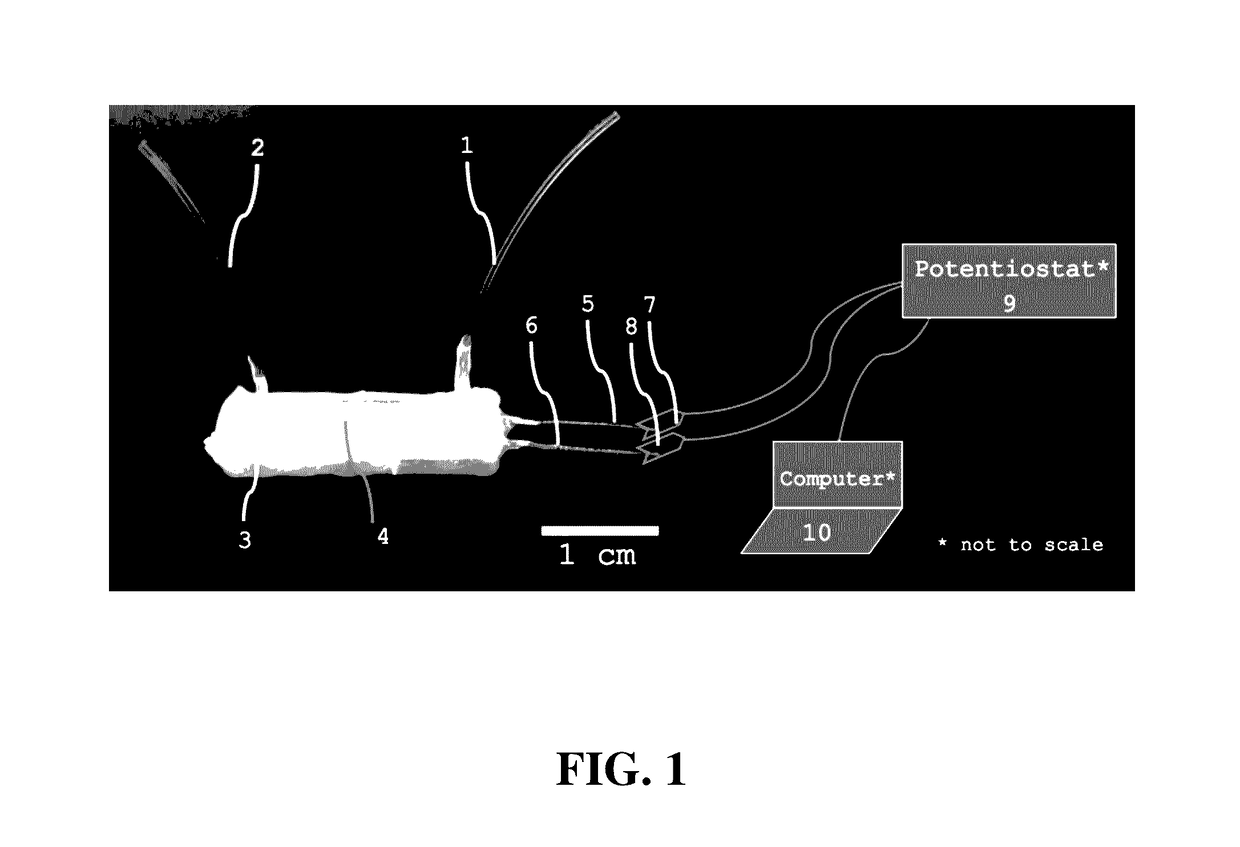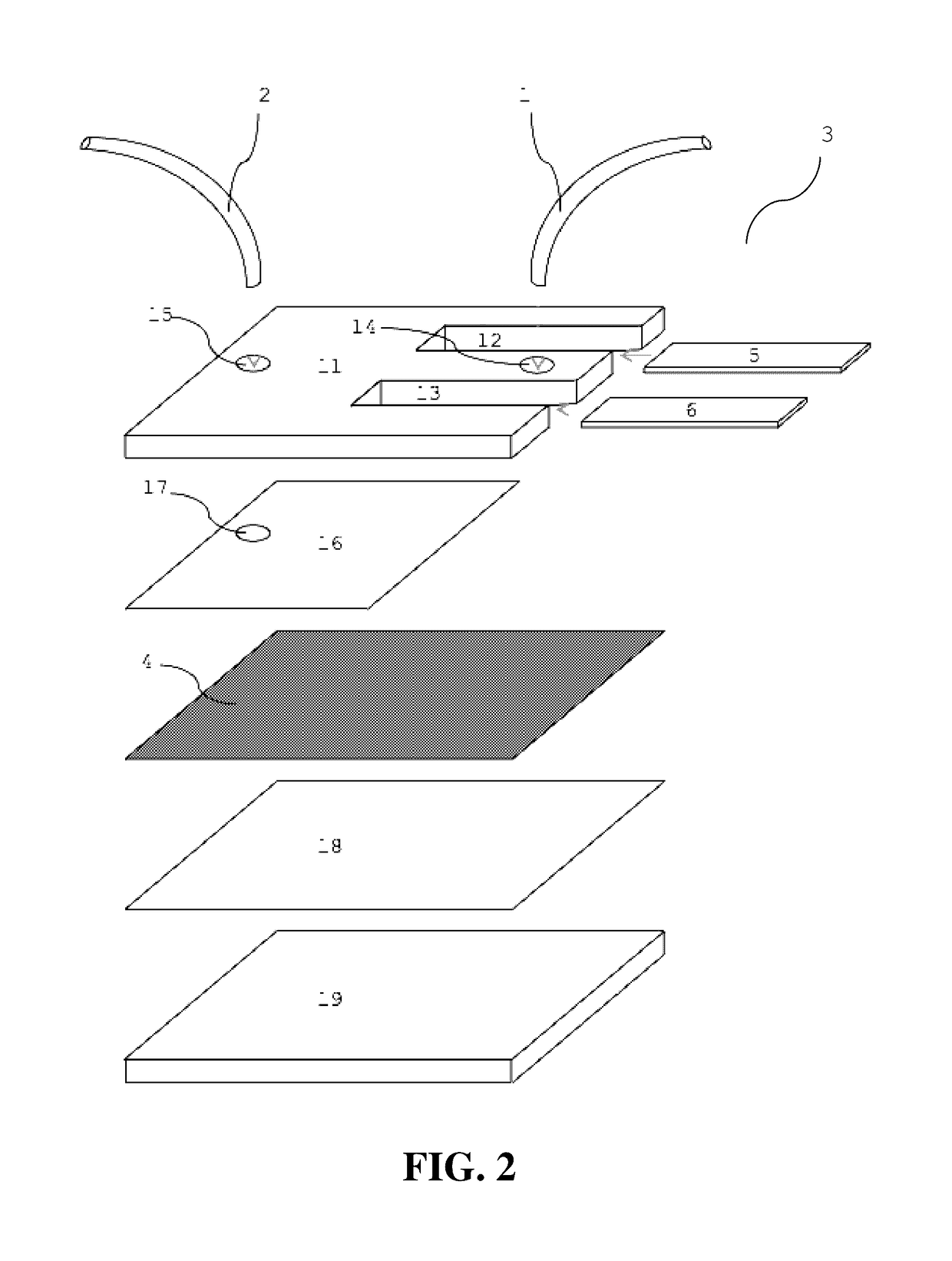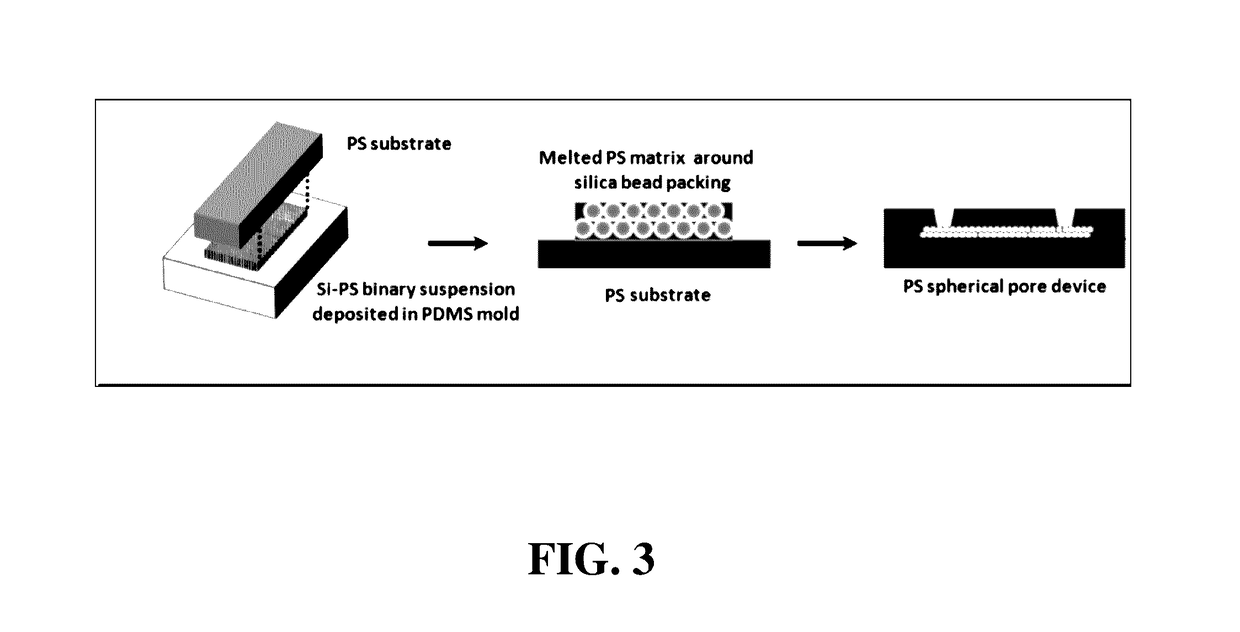Microfluidic capture and detection of biological analytes
a biological analyte and microfluidic technology, applied in the field of microfluidic capture and detection of biological analytes, can solve the problems of high hiv viral load, laborious and time-consuming viral load testing, and inability to detect high-risk bacteria, so as to improve detection accuracy, improve detection accuracy, and improve detection accuracy
- Summary
- Abstract
- Description
- Claims
- Application Information
AI Technical Summary
Benefits of technology
Problems solved by technology
Method used
Image
Examples
example
Example 1—Method of Fabricating the Regular Macroporous Layer
[0073]A methods of fabricating the regular macroporous layer is described. The polystyrene (PS) spherical pore devices were fabricated by templating close-packed silica beads. First, a polydimethyl siloxane (PDMS) open channel of 25 mm×8 mm×30 μm was fabricated using standard soft lithography. The PDMS surface was pretreated by a plasma gun to promote spreading of the suspension throughout the open channel. Then, 20 μL of a binary suspension of 1-μm silica and 100-nm PS in de-ionized water was pipetted into the PDMS channel. After drying, the silica beads self-assembled into ordered structures with the PS beads filling the interstitial space. Next, the PS nanobeads were melted at 240° C. for 10 min. The sample was glued to a PS flat sheet by epoxy glue and the PDMS mold was peeled off. Afterwards, silica beads were removed in 50% hydrofluoric acid and the device was rinsed in DI water. The porous matrix was attached to a f...
example ii
or Fabrication a Microfluidic Capture Device
[0074]The steps of the protocol for fabricating a microfluidic capture device according to the present invention are described below, in numeric order.
[0075]i. A binary suspension is composed of 20% silica (SiO2, diameter=1 μm) and 8% polystyrene (PS, diameter=0.2 μm).
[0076]ii. Using standard soft photolithography, a positive mold with dimensions 25 mm×8 mm×30 μm SU-8 photoresist is spun onto a silicon wafer.
[0077]iii. Poly(dimethyl siloxane) (PDMS) is poured over the mold and cured for two hours at 60° Celsius.
[0078]iv. The PDMS is cut in a rectangular shape enclosing the area of the mold.
[0079]v. The PDMS is placed on a glass slide with the negative mold facing up.
[0080]vi. The area of the negative mold is plasma oxidized for ten seconds.
[0081]vii. 20 μL of the binary suspension is deposited to fill the mold and spread evenly.
[0082]viii. After 30 minutes, the glass slide with PDMS and binary suspension is heated at 240° Celsius for 10 mi...
example 3
ssay for Aggregate Building
[0094]i. Steps in binding assay may be run under flow or static conditions and have been optimized for greatest viral capture and aggregate formation when used to quantify HIV. Times may be further optimized in the future to increase signal or validate capture with other analytes.
[0095]ii. The device is functionalized with 100 μL of 10 μg / mL neutravidin (or other antibody or molecule capable of capturing a biomolecule of interest such as anti-gp120) at a flow rate of 5 μL / min or injected statically for 20 min. A static incubation at 4° Celsius for at least 2 hours can be used.
[0096]iii. 200 μL of solution containing the biomolecule of interest (e.g., HIV particles) is flowed through device at a rate of 15 μL / min under flow or injected statically for 8 minutes. Alternately, 250 uL of solution containing the biomolecule of interest (e.g., HIV) is flowed through device at a rate of 15 μL / min under flow or injected statically for 17 minutes.
[0097]iv. 100 μL of...
PUM
 Login to View More
Login to View More Abstract
Description
Claims
Application Information
 Login to View More
Login to View More - R&D
- Intellectual Property
- Life Sciences
- Materials
- Tech Scout
- Unparalleled Data Quality
- Higher Quality Content
- 60% Fewer Hallucinations
Browse by: Latest US Patents, China's latest patents, Technical Efficacy Thesaurus, Application Domain, Technology Topic, Popular Technical Reports.
© 2025 PatSnap. All rights reserved.Legal|Privacy policy|Modern Slavery Act Transparency Statement|Sitemap|About US| Contact US: help@patsnap.com



